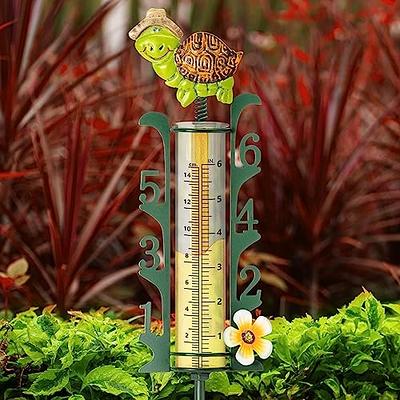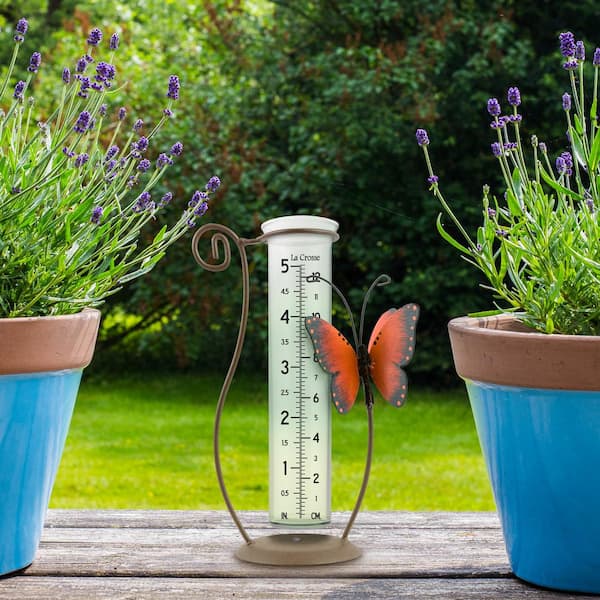The Rain Gauge: Encouraging Areas with Precise Rain Information
Wiki Article
Exactly How to Choose the Right Rain Gauge for Accurate Rain Information
To get trusted measurements, it is essential to select the appropriate rain gauge. Taking into consideration factors such as location, type, and accuracy of the rainfall gauge will help make certain precise information collection. Additionally, understanding the maintenance and calibration treatments will certainly add to the longevity and integrity of your rainfall gauge.Significance of Picking the Right Rainfall Scale
The significance of picking the appropriate rainfall gauge hinges on acquiring precise and trustworthy rainfall information for exact atmospheric analysis. Rain data is critical for a vast array of applications, including weather condition forecasting, hydrological modeling, and environment research study. Imprecise or undependable information can result in erroneous conclusions and flawed decision-making procedures.
Secondly, the precision and accuracy of the rain scale are critical. The gauge must be able to measure rains with high accuracy, catching also tiny amounts of precipitation accurately.
Furthermore, the location and installment of the rain scale are important considerations. It ought to be positioned in an open location, far from obstructions that could affect rains measurements. The scale ought to be positioned at an appropriate height and angle to avoid spilling and make certain proper catchment of rainwater.
Elements to Consider When Picking a Rainfall Scale
When selecting a rain scale, there are numerous crucial aspects to consider. There are various types offered, including typical rain determines, tipping bucket rain assesses, and considering rainfall assesses.Another aspect to think about is the product of the rainfall scale. Rain evaluates can be made from numerous materials, such as plastic, metal, or glass. The product picked should be immune and long lasting to climate condition, making certain that the rainfall gauge will certainly withstand the elements and supply exact measurements gradually.
Precision is also an essential aspect to think about. Search for rainfall assesses that have been adjusted and tested for accuracy. Features such as anti-splash rings and funnels can likewise boost the precision of the dimensions.

Last but not least, take into consideration the climate and atmosphere in which the rainfall scale will be made use of. Various rainfall gauges are suitable for different environments, so it is important to pick one that is appropriate for the conditions in your location.
Various Types of Rain Determines Readily Available
To additionally explore the aspects to consider when choosing a rain scale, it is necessary to recognize the various kinds of rainfall evaluates offered. There are a number of kinds of rain determines, each with its own advantages and downsides. One of the most typical kind is the basic rain gauge, additionally called the cylindrical rainfall scale. This type contains a straight-sided round container with a funnel-shaped top. It is straightforward to use and offers accurate dimensions of rains.One more kind of rainfall scale is the tipping pail rainfall scale. As the rain falls into the scale, it fills up one side of the container, triggering it to tip and clear the water.
A 3rd sort of rainfall scale is the evaluating rain gauge. This gauge uses an equilibrium system to gauge the weight of the accumulated browse around these guys rains. As the rain falls under the scale, it is collected in a container connected to an equilibrium. The weight of the water is gauged, and the rains quantity is computed based on the weight. Evaluating rain gauges are very accurate but can be extra expensive and call for normal upkeep.
Ultimately, there are likewise remote rain gauges that use progressed modern technology to measure rainfall (The Rain Gauge). These assesses use sensing units and transmitters to send data wirelessly to a central unit. Remote rain gauges are convenient for monitoring rainfall in hard-to-reach areas or for large-scale data collection
Just How to Figure out the Accuracy of a Rain Gauge
One method to analyze the accuracy of a rain scale is by carrying out routine calibration dimensions. Calibration includes comparing the analyses of a rain scale to a conventional dimension, such as a licensed rain gauge or a weather station with high accuracy. By comparing the measurements, any discrepancies or errors in the rainfall gauge can be determined and made up.To conduct a calibration measurement, begin by accumulating rains information from both the rain scale and the standard dimension tool over a details period, such as a month. Contrast the readings and calculate the distinction between them. This distinction is called the calibration error.
It is necessary to note that calibration dimensions need to be done on a regular basis, as ecological variables, such as temperature, wind, and particles, can impact the accuracy of the rain scale gradually. By performing routine calibrations, any changes in the accuracy of the rain scale can be found and changes can be made appropriately.
Along with calibration, it is likewise recommended to tidy and maintain the rainfall scale routinely to guarantee its precision. Get rid of any type of debris or blockages that might impact the accuracy of the dimensions, and look for any kind of indications of damage or use that may require repair services or replacement.
Tips for Keeping and Adjusting Your Rain Gauge
Routine upkeep and calibration are important for ensuring the accuracy and reliability of your rainfall gauge in gauging rains browse this site data (The Rain Gauge). By adhering to a couple of easy tips, you can make certain that your rain scale is effectively maintained and adjustedTo start with, it is very important to cleanse your rain scale routinely to stop any particles or dirt from obstructing the rain collection mechanism. Use a moderate detergent and a soft brush to delicately cleanse the within and beyond the scale. their explanation Rinse it completely with clean water and permit it to completely dry completely before reinstalling it.
Second of all, it is suggested to adjust your rainfall gauge a minimum of yearly. Calibration entails comparing the measurements of your rainfall gauge with those of a relied on and exact reference gauge. This will certainly aid you identify and remedy any kind of possible errors in your rainfall gauge's dimensions.
To calibrate your rain scale, accumulate a well-known quantity of water making use of a determining container and contrast it with the measurements taped by your rain scale. Change the analyses appropriately to ensure accuracy.

Verdict
In final thought, choosing the right rain gauge is essential for getting precise rainfall information. Aspects such as budget, objective, and location need to be considered when choosing a rainfall scale.There are different types available, including basic rain gauges, tipping bucket rain assesses, and weighing rain gauges.To even more discover the aspects to consider when picking a rainfall gauge, it is crucial to recognize the different kinds of rainfall assesses readily available. The most usual kind is the standard rain gauge, likewise recognized as the cylindrical rain scale.One more kind of rainfall gauge is the tipping bucket rain scale. Calibration entails comparing the readings of a rain gauge to a conventional measurement, such as a licensed rain scale or a weather condition station with high accuracy.
Report this wiki page